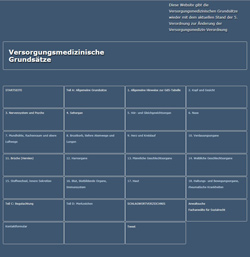Dip Interstitial Lung Disease
Dip interstitial lung disease. It is characterized by the accumulation of macrophages in large numbers in the alveolar spaces associated with interstitial inflammation andor fibrosis. Desquamative interstitial pneumonia DIP. Respiratory bronchiolitis respiratory bronchiolitis associated interstitial lung disease RB-ILD and DIP are now considered on a spectrum and it can be difficult in some cases to separate these diseases clearly Histopathology 201158509 Deaths are somewhat common in DIP 6 - 30 but rare in respiratory bronchiolitis and RB-ILD.
Cryptogenic organizing pneumonia COP. DIP Desquamative Interstitial Pneumonia is an interstitial lung disease with diffuse and uniform accumulation of alveolar macrophages. In 5 to 10 of patients the chest radiograph is normal.
IIPs include seven entities. However this condition is on the increase again as the drug regains popularity as a urinary antiseptic. Desquamative interstitial pneumonia DIP is a form of idiopathic interstitial pneumonia featuring elevated numbers of macrophages within the alveoli air sacs of the lung.
Amiodarone pulmonary toxicity APT was recognized in 1980 and remains a significant cause of DI-. Lymphoid interstitial pneumonia LIP. There is growing evidence that genetic factors contribute to the development of ILD notably in the context of familial aggregation ie familial interstitial pneumonia FIP.
Desquamative interstitial pneumonia DIP is characterised by the accumulation of numerous pigmented macrophages within most of the distal airspace of the lung and sometimes the presence of giant cells. There is a strong association with tobacco since 90 of the patients are smokers. Nonspecific interstitial pneumonia NSIP.
Ures1and2smoking-relatedrespiratorybronchiolitisinterstitial lung disease RB-ILD and desquamative interstitial pneumonia DIP. Figure 3 and acutesubacute IIPs cryptogenic organizing pneumoniaCOPandacuteinterst itialpneumoniaAIPFigure4 and Table 2. There are seven recognized distinct subtypes of IIP.
Desquamative interstitial pneumonia is a type of idiopathic interstitial pneumonia. Desquamative Interstitial Pneumonia Lung.
There is a strong association with tobacco since 90 of the patients are smokers.
Interstitial lung disease includes more than 200 different conditions that cause inflammation and scarring around the balloon-like air sacs in your lungs called the alveoli. Desquamative interstitial pneumonia DIP is characterised by the accumulation of numerous pigmented macrophages within most of the distal airspace of the lung and sometimes the presence of giant cells. It is characterized by the accumulation of macrophages in large numbers in the alveolar spaces associated with interstitial inflammation andor fibrosis. However this condition is on the increase again as the drug regains popularity as a urinary antiseptic. The alveolar macrophages have a characteristic light brown pigmentation and accumulate in the alveolar lumen and septa regions of the lower lobes of the lungs. There is growing evidence that genetic factors contribute to the development of ILD notably in the context of familial aggregation ie familial interstitial pneumonia FIP. Cryptogenic organizing pneumonia COP. In 25 to 30 of cases the radiologic findings are atypical. Desquamative interstitial pneumonia is chronic lung inflammation characterized by mononuclear cell infiltration of the airspaces.
There is a strong association with tobacco since 90 of the patients are smokers. There is growing evidence that genetic factors contribute to the development of ILD notably in the context of familial aggregation ie familial interstitial pneumonia FIP. Interstitial Lung Disease Induced by Drugs Respiration 200471301326 303 nitrofurantoin lung decreased from a high in the 1960s to a low in the 1980s. Diagnosis of DIP is not easy and requires surgical lung biopsy. Interstitial lung diseases ILDs are a heterogeneous group of disorders of known or unknown etiology characterized by dyspnea diffuse parenchymal lung abnormalities restrictive pulmonary function and impaired gas exchange 1. There is a strong association with tobacco since 90 of the patients are smokers. Lymphoid interstitial pneumonia LIP.




Posting Komentar untuk "Dip Interstitial Lung Disease"